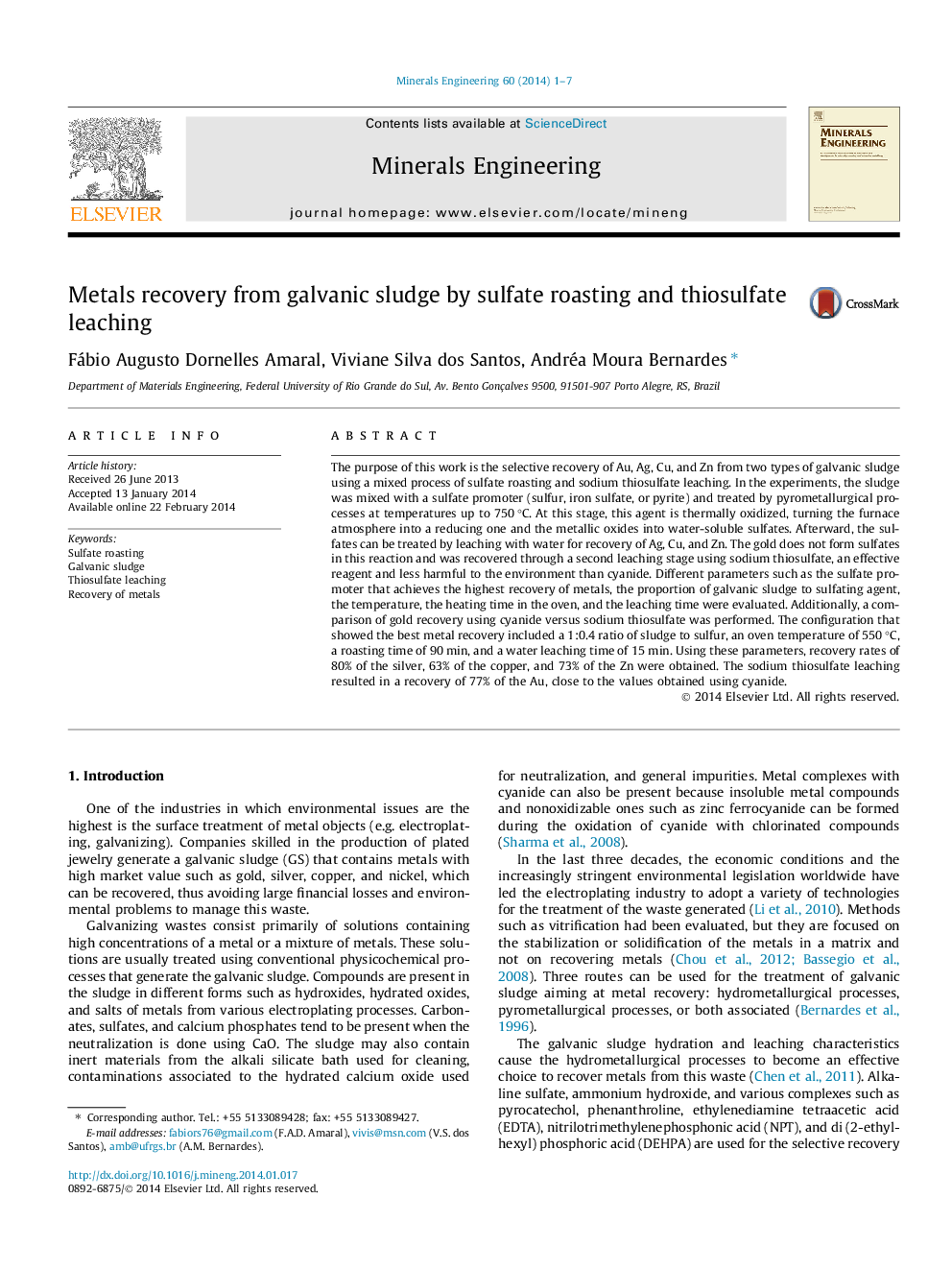| Article ID | Journal | Published Year | Pages | File Type |
|---|---|---|---|---|
| 233283 | Minerals Engineering | 2014 | 7 Pages |
•Sulfate roasting and thiosulfate leaching were used to recover metals.•Three sulfate promoters (sulfur, iron sulfate or pyrite) were used.•Sulfur presented best results on the recovery of Ag, Cu and Zn.•A comparison of gold recovery with cyanide or sodium thiosulfate was performed.•Thiosulfate is efficient in the recovery of gold.
The purpose of this work is the selective recovery of Au, Ag, Cu, and Zn from two types of galvanic sludge using a mixed process of sulfate roasting and sodium thiosulfate leaching. In the experiments, the sludge was mixed with a sulfate promoter (sulfur, iron sulfate, or pyrite) and treated by pyrometallurgical processes at temperatures up to 750 °C. At this stage, this agent is thermally oxidized, turning the furnace atmosphere into a reducing one and the metallic oxides into water-soluble sulfates. Afterward, the sulfates can be treated by leaching with water for recovery of Ag, Cu, and Zn. The gold does not form sulfates in this reaction and was recovered through a second leaching stage using sodium thiosulfate, an effective reagent and less harmful to the environment than cyanide. Different parameters such as the sulfate promoter that achieves the highest recovery of metals, the proportion of galvanic sludge to sulfating agent, the temperature, the heating time in the oven, and the leaching time were evaluated. Additionally, a comparison of gold recovery using cyanide versus sodium thiosulfate was performed. The configuration that showed the best metal recovery included a 1:0.4 ratio of sludge to sulfur, an oven temperature of 550 °C, a roasting time of 90 min, and a water leaching time of 15 min. Using these parameters, recovery rates of 80% of the silver, 63% of the copper, and 73% of the Zn were obtained. The sodium thiosulfate leaching resulted in a recovery of 77% of the Au, close to the values obtained using cyanide.
